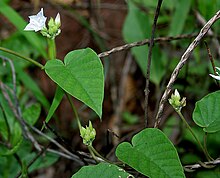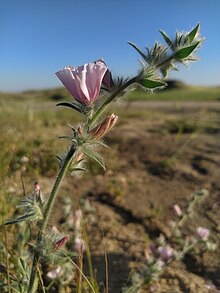I. Convolvulaceae Description and Genera:
– Recognized by funnel-shaped, radially symmetrical corolla
– Floral formula: 5 sepals, 5 fused petals, 5 epipetalous stamens, syncarpous gynoecium
– Stems usually winding, leaves simple and alternate
– Fruit types include capsule, berry, or nut with 2 seeds per locule
– Some species like sweet potato have food and medicinal value
– Genera include Aniseia, Choisy, Odonellia, Tetralocularia, Calystegia, Convolvulus, Jacquemontia, Polymeria, Bonamia, Cladostigma, Cressa, Evolvulus, Hildebrandtia, Cuscuta, Dichondra, Falkia, Nephrophyllum, Petrogenia
II. Convolvulaceae References and Further Reading:
– Relies on molecular characterization of clavicipitaceous fungus
– Loline alkaloids found in Argyreia mollis
– Ethnobotanical analysis of parasitic plants in Nepal Himalaya
– Genera information sourced from Germplasm Resources Information Network
– Dissolution of Convolvulaceae tribe Merremieae and new classification
– Further reading includes ‘The American Erycibeae’ by Daniel F. Austin
– Various researchers like M. Costea and D. F. Austin have contributed to the study of Convolvulaceae
III. Field Bindweed Information and Management:
– Field Bindweed (Convolvulus arvensis) details including identification and control methods
– Resources from organizations like The Nature Conservancy, Univ. of Idaho Extension, Univ. of California Agriculture and Natural Resources, and NebFacts
– Control alternatives explored in publications like ATTRA
– Element Stewardship Abstract available for Convolvulus arvensis
– Pest Notes on Field Bindweed published by Univ. of California Agriculture and Natural Resources
IV. Weed Management Strategies and Techniques:
– Insights on organic weed management in vineyards from Univ. of California, Davis Cooperative Extension and Washington State Univ. Cooperative Extension
– Eradication techniques documented in publications like U.S. Dept. of Agriculture bulletin
– Biological control methods discussed in literature edited by Eric M. Coombs
– Coping strategies without herbicides explored in the Journal of Pesticide Reform
– Resources on managing Aceria malherbae gall mites for Bindweed control from New Mexico State Univ. Cooperative Extension Service
V. Additional Resources and Publications:
– Various agricultural extension services provide information on Field Bindweed control and management
– Academic publications and bulletins offer a range of strategies and techniques for dealing with Bindweed infestations
– Valuable insights from researchers like J. L. Littlefield and Sue Dockstader
– Media related to Convolvulaceae available on Wikimedia Commons
– Visual references and comprehensive information from academic sources
This article includes a list of general references, but it lacks sufficient corresponding inline citations. (May 2013) |
Convolvulaceae (/kənˌvɒlvjəˈleɪsi.iː, -aɪ/), commonly called the bindweeds or morning glories, is a family of about 60 genera and more than 1,650 species. These species are primarily herbaceous vines, but also include trees, shrubs and herbs. The tubers of several species are edible, the best known of which is the sweet potato.
| Bindweed family | |
|---|---|

| |
| Ipomoea imperati | |
| Scientific classification | |
| Kingdom: | Plantae |
| Clade: | Tracheophytes |
| Clade: | Angiosperms |
| Clade: | Eudicots |
| Clade: | Asterids |
| Order: | Solanales |
| Family: | Convolvulaceae Juss. |
| Type genus | |
| Convolvulus | |
| Genera | |
|
See text | |


